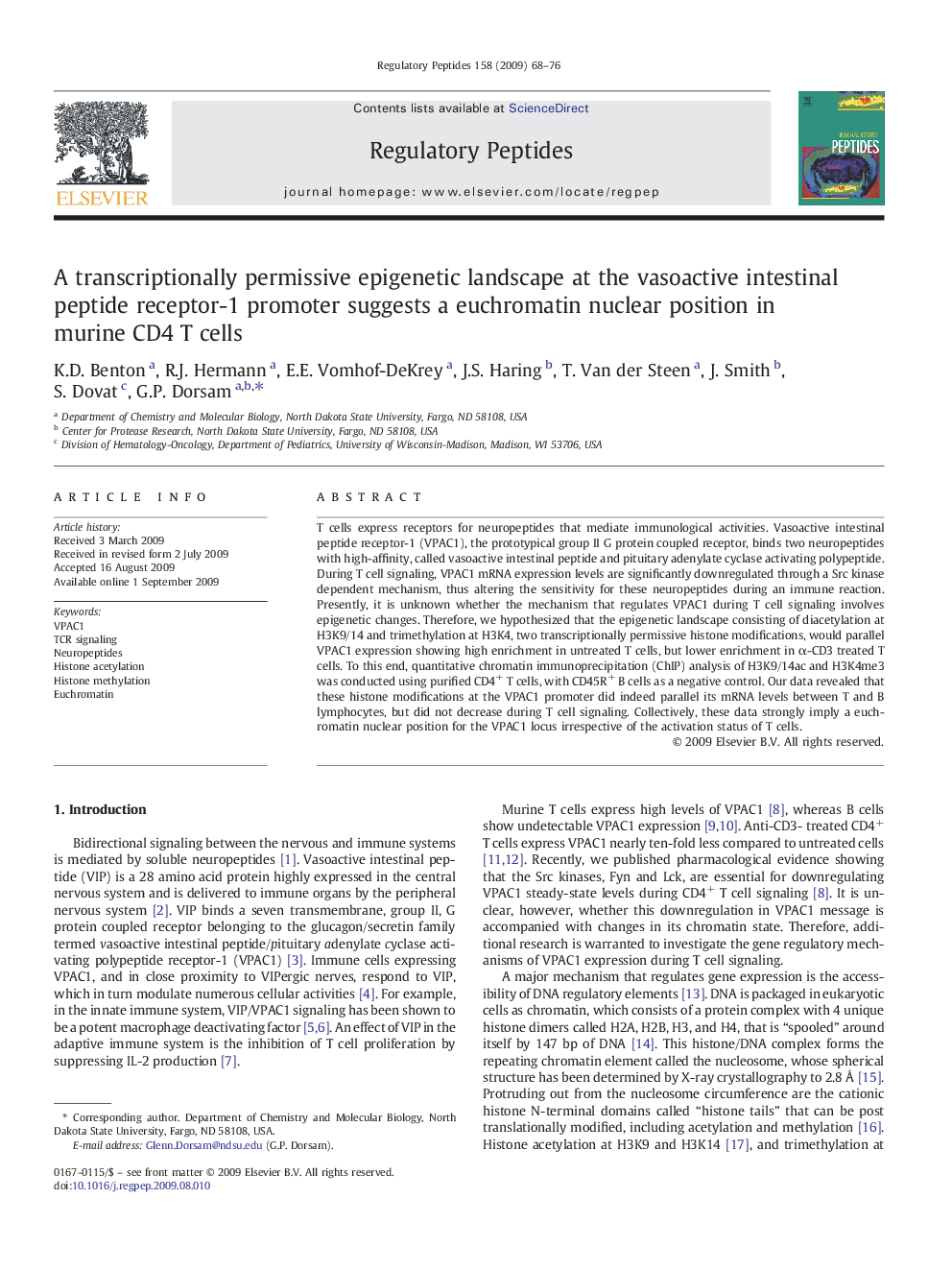| Article ID | Journal | Published Year | Pages | File Type |
|---|---|---|---|---|
| 2022947 | Regulatory Peptides | 2009 | 9 Pages |
Abstract
T cells express receptors for neuropeptides that mediate immunological activities. Vasoactive intestinal peptide receptor-1 (VPAC1), the prototypical group II G protein coupled receptor, binds two neuropeptides with high-affinity, called vasoactive intestinal peptide and pituitary adenylate cyclase activating polypeptide. During T cell signaling, VPAC1 mRNA expression levels are significantly downregulated through a Src kinase dependent mechanism, thus altering the sensitivity for these neuropeptides during an immune reaction. Presently, it is unknown whether the mechanism that regulates VPAC1 during T cell signaling involves epigenetic changes. Therefore, we hypothesized that the epigenetic landscape consisting of diacetylation at H3K9/14 and trimethylation at H3K4, two transcriptionally permissive histone modifications, would parallel VPAC1 expression showing high enrichment in untreated T cells, but lower enrichment in α-CD3 treated T cells. To this end, quantitative chromatin immunoprecipitation (ChIP) analysis of H3K9/14ac and H3K4me3 was conducted using purified CD4+ T cells, with CD45R+ B cells as a negative control. Our data revealed that these histone modifications at the VPAC1 promoter did indeed parallel its mRNA levels between T and B lymphocytes, but did not decrease during T cell signaling. Collectively, these data strongly imply a euchromatin nuclear position for the VPAC1 locus irrespective of the activation status of T cells.
Related Topics
Life Sciences
Biochemistry, Genetics and Molecular Biology
Biochemistry
Authors
K.D. Benton, R.J. Hermann, E.E. Vomhof-DeKrey, J.S. Haring, T. Van der Steen, J. Smith, S. Dovat, G.P. Dorsam,
